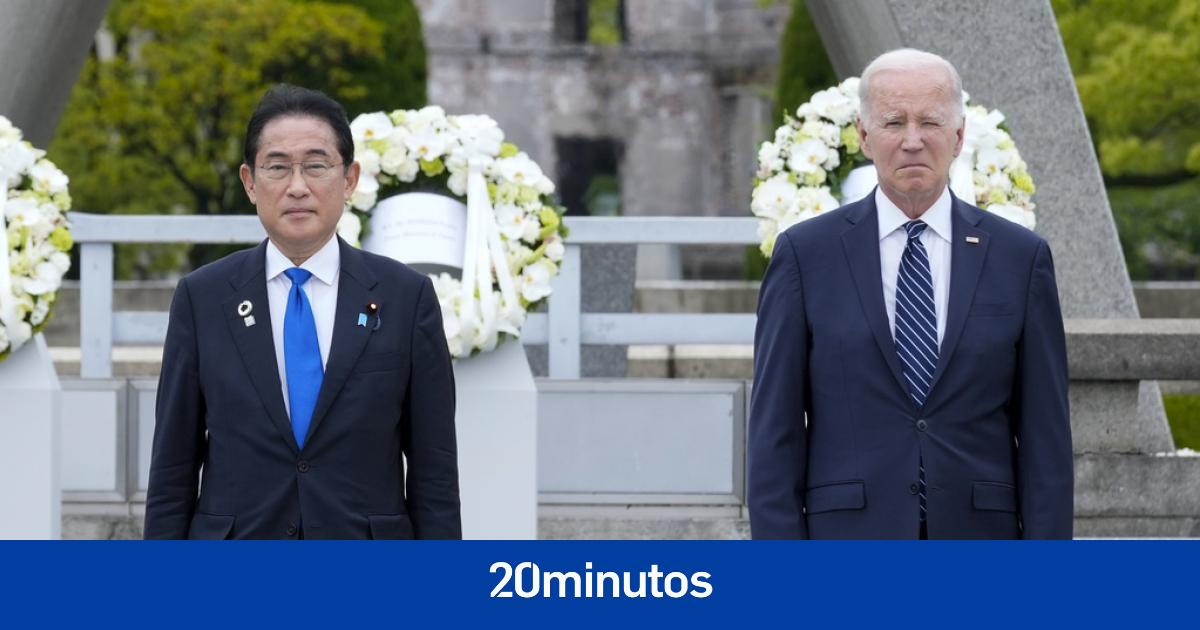Biden brings nuclear briefcase to Hiroshima

U.S. President Joe Biden has brought himself to the city of Hiroshima, the first city in history to suffer an atomic bombing, the briefcase with which he can launch a nuclear attack. from anywhere in the world.
The briefcase – known as the “nuclear ball” – weighs about 20 kilos, is made of black leather. and always accompanies the President of the United States on his trips in and out of the country.
The press was able to see how a female military aide was getting off the presidential plane Air Force One the day before, Thursday. upon arrival in Japan with the famous briefcase, containing the protocols necessary to launch a nuclear attack.
The briefcase is always carried by him a member of the Armed Forces Who is part of the retinue accompanying the president.
According to the official journal of the reputable Smithsonian Institution, the origin of the nuclear briefcase is classified for security reasons, but it was President John F. Kennedy (1961-1963), who created the protocols of that system. after the Cuban missile crisis.
Not many details have been published about the operation of the casebut some nuclear weapons experts have been revealing information about its operation in recent years.
For example, the expert Stephen Schwartz revealed in 2021 in a Center for Arms Control and Nonproliferation podcast. that there is not just one “nuclear ball”, but at least three.
According to Schwartz, the “nuclear ball” does not conceal sophisticated military technology, as Hollywood has portrayed on the big screen, but rather a large number of papersincluding the instructions for a transmission system which would enable the president to speak to the public in the event of an attack.
It also contains. a list of places on land, at sea and in the air where the president could take refuge. in case of attack and a binder with all the options for an offensive and which, according to Schwartz, resembles a “Chinese food menu” with icons to show the different possibilities and specify the damage each one carries.
The cookie is more important than the briefcase
However, according to Schwartz, the most important thing in launching a nuclear attack is not the briefcase, but rather a small laminated card known as a “cracker” or “gold code.” and which serves to verify the identity of the president.
Contrary to what the movies show, the head of state does not have a red button to fire the missiles and the “cookie” does not contain the secret nuclear codes either.
Those codes are locked up tight in the Pentagon, so that if the president wants to launch a nuclear attack the first thing he must do is use a special phone that his military assistant has that connects him to officials in the missile command.
Then, the president would have to verify his identity using the alphanumeric codes on the “cookie,” e.g. “D-E-5,” and only then would the launch process begin.
The paradox of taking the nuclear briefcase to Hiroshima.
The presence of the briefcase and the “cookie” in Hiroshima is paradoxical to say the least because. The United States dropped a bomb on the city on August 6, 1945. dubbed “Little Boy” which immediately killed some 80,000 people, about 30% of the population at the time.
The death toll rose to about 140,000 people. by the end of 1945, and in the years that followed, casualties from radiation effects more than doubled.
The United States has only launched two nuclear bombs in its history: the one on Hiroshima and another on Nagasaki three days later.
Japan’s Prime Minister Fumio Kishida, who has family roots in Hiroshima, wants the G7 summit that begins Friday to serve to achieve commitments to nuclear disarmamenta task that is by no means easy and for which Washington has already shown little willingness.
Biden has no plans to apologize for the bombshell that devastated Hiroshima, White House National Security Advisor Jake Sullivan told reporters this week.
Nor did then-President Barack Obama apologize for the slaughter. when he visited Hiroshima in 2016, as survivors of the bombing and other Japanese voices demanded at the time.





